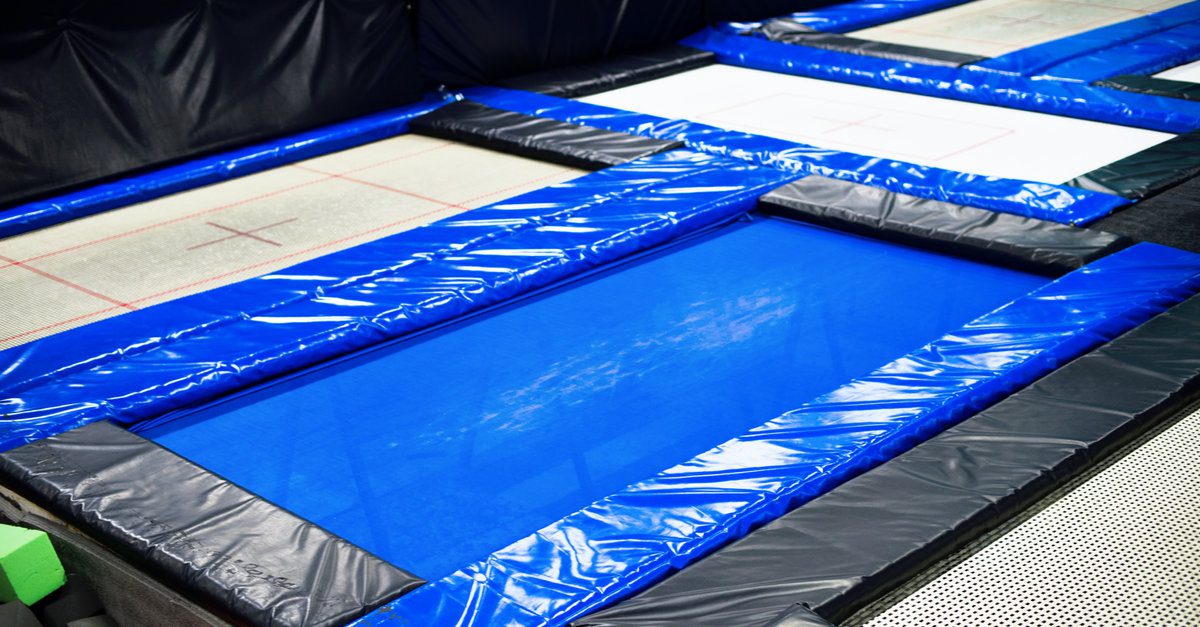Trampoline Parks

Laura M. Miele, Ph.D., Sport, Fitness, and Recreation Expert
With the rise in growth of trampoline parks internationally since 2011, there has been some controversy regarding their safety. Safe practices need to be examined to determine specific criteria that need to be met in order to assist in the reduction of injuries. The American Standards for Testing Methods (International) has created standards to assist manufacturers and trampoline park operators on minimal standards to assist with this. However, it is ultimately the responsibility of the manufacturers and owners to carry out the standards to minimize the risks of injury.
Currently, trampoline parks are not just about jumping. These parks are incorporating challenges and ninja warrior courses: the industry standards cannot keep up. It is imperative that manufacturers and operators alike research the areas of their parks in which to set up these courses as well as how to lay them out and what preventative safety equipment and devices they should provide.
This article will provide suggestions on how to keep these parks and courses safer, thus decreasing the risk of catastrophic injury.
Supervision by Trainers/Management
To ensure the proper use of equipment, supervision of a facility requires qualified personnel to oversee all activity areas. Supervisors must move about the floor and assist attendants in any capacity necessary. Particular care is required in the supervision of attendants to recognize ineffective or unsafe practices that may require prompt intervention.
The trampoline park court (TC) attendants should be rotated every 30 minutes. This will allow them to maintain their attention and ability to respond. A way to properly rotate would be to blow a whistle and have a five-minute freeze time.
- This not only allows the court attendants to get situated, it also gives them time to exchange information which can be valuable, depending on the day and the potential behavior challenges of participants. If the rotation is done properly, there are no gaps in coverage and the patrons are kept safe. This rotation method is something similar to what you see in public pools with the rotation of life guards. This will assist with maintaining attention and not becoming distracted or bored.
- The new TC attendant should constantly scan the area for any hazards.
- The TC attendant should never turn their back to the area they are supervising.
- Supervision should also incorporate observing patron’s safe use of all areas and obstacles.
New activity (attractions) areas and proper supervision:
TC court attendants should not be supervising different activities at one time…
- When there are separate areas there should be an attendant that can give full attention to assigned areas.
- The foam pits and trampoline air bag pit will have a minimum of one dedicated court attendant per area that does NOT have the responsibility of supervising any other areas.
- Other areas, including ninja courses, should be supervised in the capacity of being able to spot different obstacles when necessary and/or execute any safety devices required. This means they must be trained on how to utilize the safety devices, properly assist the patron(s) and/or identify if a patron is in danger. If this is the case, they should not allow the patron to continue its use.
- Child zone supervisors should ensure the safety of children within that area and prohibit a parent or adolescents from entering. This can create an unsafe and dangerous condition for both the older patron and the young children.
Orientation & Attendant Training
The most important aspect of owning a trampoline park is hiring, employee orientation, and training. Properly orientating employees will not only assist in risk management, but also in injury reduction.
TC court attendant training should involve:
Understanding the rules, how to enforce them and how to report an incident or hazard that may arise.
A test which should be taken and passed prior to stepping out on the courts.
Learning themselves how to jump properly in order to understand the fundamentals of their own movement.
- Understanding that one improper movement is enough. They should provide a warning to the patron and know the protocol for removal from the park if necessary.
- Training on what to look for in terms of risk and how to identify dangerous patron behavior (climbing or hanging on nets).
- Knowing how to bounce properly and how to identify jumpers who are out of control during their jumps. The TC attendant will have the responsibility of informing out of control jumpers to lower their jumps until effective control is regained.
- How to take their job seriously and understanding that they are in charge of their area. Their job is of the utmost importance in terms of preventing serious injury or death.
- Ways to communicate in the event of an unruly patron, a dangerous situation (a fight, a threat) or injury.
This would allow a manager or supervisor on duty to monitor the park at all times, walking the floor, supervising the flow of patrons to ensure the courts are not overloaded and that onlookers or spectators do not obstruct the view of the court attendants.
Safety Signage
Patrons need to be properly informed on what they should or should not do while using these parks. There can be many risks from not following proper instructions. Signage should be placed in areas that can be easily identified by its patrons.
Facility Operations/Equipment Issues
Many injuries occur from landing on the padding over the springs on the frame of a trampoline. This should be avoided, and with proper supervision and coaching of the patrons, should reduce the risk of landing on these areas. Padding can only provide so much attenuation and assist in the cushioning of the landing, but landing incorrectly and directly on this area cannot fully limit the risk.
It is critical that trampoline park owners properly inspect and maintain these areas to be certain that springs have not popped or that other areas have been compromised. This could create a hazard and increase the risk of injury. It is equally as important that they review the ASTM F-2970 standards to ensure that they are building and utilizing nettings, padding, redundant beds and barriers in the proper way.
Maintenance and Inspection
Trampoline Park owners need to follow the manufacturer recommendations. They also should create a daily checklist that should be carried out. Documentation and proper record keeping will allow owners and staff to know what maintenance has been done. Inspection should be twice daily, at the start and end of each day. Specific inspections should be implemented at varying times as specified by the manufacturers.
As a trampoline park owner what can you do to keep your park safer?
1. Review the F-2970-20 ASTM (International) standard on Trampoline Parks.
2. Train your attendants and supervisors properly by following Manufacturers Recommendations, USA Gymnastics (USA-G) and Trampoline and Adventure Safety and Risk Management Guidelines (Trampoline and Adventure Advisory Group).
3. Research and educate yourself and your staff prior to introducing new attractions to the Trampoline Park.
References-Trampoline and Adventure Advisory Group, USA Gymnastics Handbook
Categories: Laura M. Miele | Recreation Expert


